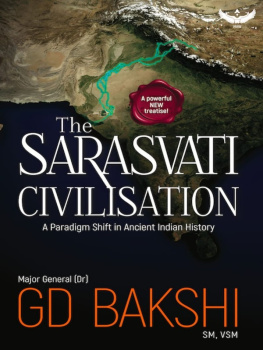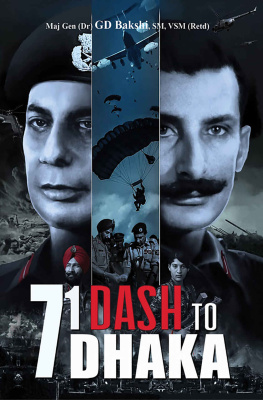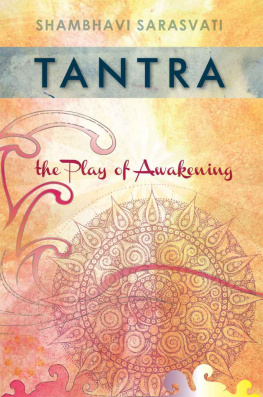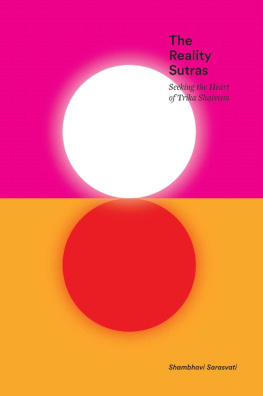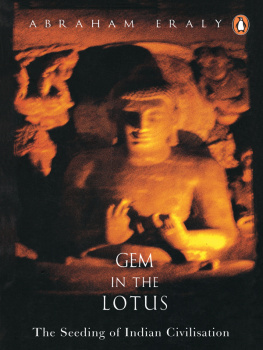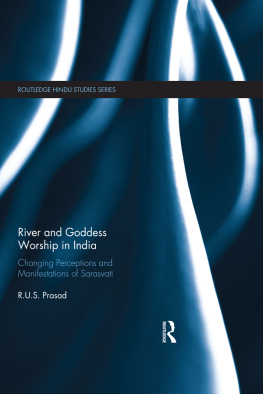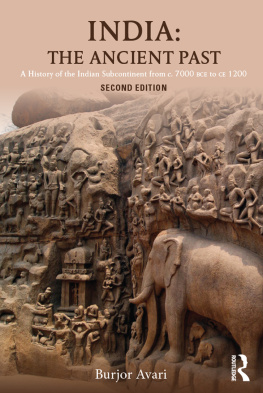The book titled The Sarasvati Civilization: A Paradigm Shift in Ancient Indian History by Major General G.D. Bakshi is based on pure scientific research indicating truly a landmark shift in the history of the country. The river Sarasvati has played an important role in the origin and development of the Civilisation of this country. The present book, through its scientific and multi- disciplinary approach, has put to rest many issues regarding location of the river, the identity of the culture that flourished along its bank and the Aryan problem. The book is useful as it contains holistic understanding of the river, which has given true cultural identity to this great country.
Prof. Vasant Shinde
Vice Chancellor, Deccan College-deemed University, Pune
The book adopts an interdisciplinary approach in understanding our ancient past. Archaeology, itself is a subject having multi- disciplinary dimensions and the need of the time is to study it along with a blend of tradition, literature and science in order to find the truth and understand the issues in a holistic manner which one may find in the book.
Dr B.R.Mani
DG, National Museum & Vice Chancellor, National Museum Institute
Gen Bakshi has made an important and much needed contribution to our understanding of the Sarasvatithe Devi, her manifestation as a mighty river and an amazing civilisation built around it. In fact it goes much further and adopts a multi-disciplinary and holistic approach to the problems of Indias ancient history.
Rajiv Malhotra
President , Infinity Foundation
First published in India 2019
Copyright 2019
Major-General (Dr.) Gagan Deep Bakshi
All rights reserved. No part of this publication may be reproduced or transmitted in any form or by any means, electronic or mechanical, including
photocopying, recording, or any information storage or retrieval system, without prior permission in writing from the publishers.
No responsibility for loss caused to any individual or organisation acting on or refraining from action as a result of the material in this publication can be accepted by Garuda Prakashan or the author.
The content of this book is the sole expression and opinion of its author, and not of the publisher. The publisher in no manner is liable for any opinion or views expressed by the author. While best efforts have been made in preparing this book, the publisher makes no representations or warranties of any kind and assumes no liabilities of any kind with respect to the accuracy or completeness of the content and specifically disclaims any implied warranties of merchantability or fitness of use for a particular purpose.
The publisher believes that the content of this book does not violate any existing copyright/intellectual property of others in any manner whatsoever. However, in case any source has not been duly attributed, the publisher may be notified in writing for necessary action.
ISBN: 978-1-942426-14-1
Cover Design: Nisheeth Sharan, Mahiraj Singh
Garuda Prakashan Private Limited Gurugram, Bharat www.garudaprakashan.com www.garudabooks.com
Printed in India
Dedicated to
, ,
The greatest of all mothers, the greatest of all rivers, the greatest of all Devis. OMother we are ignorant.
Grant us your knowledge and wisdom.
(RV 2.41.16)
The Nadi Sukta
O Ganga, Yamuna, Sarasvati, Shutudri (Satluj), Parushni (Ravi), Asikini (Chenab) and Marudvridha (Marhu River)
Vitasta (Jhelum), Sushomna (Sohan) and Ajitaya (Beas) rivers.
Listen O Rivers to these our hymns and accept them joyfully.
(RV 10.75.5)
FOREWORD
T he river Saraswati is a historical river of India mentioned frequently in the early Vedic text. The basin of river Saraswati, which gave India its true cultural identity, is considered to be cradle of civilization. Once a mighty river attracted the earliest Civilization of South Asia, the settlements of which are found densely scattered along its banks and the tributaries. The river disappeared suddenly around 2000 BCE and the earliest mighty Harappan Civilization of the country began to decline, which impacted the settlement pattern of the early cultures in the region. There is absolutely no clue for the disappearance event of the Saraswati river, but the analysis of the recent archaeological data is indicating that the river became insignificant around 2000 BCE. There are settlements of the Early Harappan (5500 BCE-2600 BCE) and the Mature Harappan (2600-2000 BCE) along the banks of the river, whereas the Late Harappan settlements (after 1900 BCE) have moved away from the main river course. This signifies that the river most probably disappeared around 2000 BCE and hence the Harappan people began to move away from its banks, into the tributary zone.
Right from the beginning of 18 th century researchers are trying to verify the location of the Vedic Saraswati and understand causes and consequences of its disappearance. Multidisciplinary approaches adopted by scholars and involvement of agencies like over a period of last decade have resulted into confirmation of the location of the river, which is today named as Ghaggar-Hakra in the northwest India. It is now confirmed scientifically that the river originated in the lower Siwalik ranges, running through Punjab, Haryana, Western Rajasthan into the Bahawalpur district in Pakistan, which runs down straight into the Kuch part of Gujarat before meeting the sea. Considering the density of the Harappan sites in the basin, one can safely identify them as the Vedic people mentioned in the Vedic text. It is therefore suggested a strong bond between the river Saraswati and the Rg Vedic people.
Though this is the most important river system in the country and large a number of Harappan sites have been discovered and excavated in the basin, there is still lack of systematic and scientific multi-disciplinary approach to the basic issues. Scholars have published in bits and plieces on the ancient river system and the archaeological data retrieved from this region in a scattered way. The present book by Maj. Gen. Bakshi therefore assumes greater significance as it has not only collated data at one place but also incorporates most recent discoveries and scientific data available till date. Through this book G.D. Bakshi it trying to resolve some of the vexing issues related to the ancient river Saraswati system. I would like to highlight the following issues and resolutions aptly raised by the author and add my comments:
The quest for an ancient river that was irrevocably lost some 3,900 years ago, is quintessentially a quest for a lost sense of self in the Indian civilization. It is in essence, a quest for unravelling its true identity. It is about Who are we as Indians? Who were the Indo- Aryans who have laid the foundation for our present day Hindu culture in India? Were they aliens or were they indigenous? If they were aliens, where did they come from? Where is the mythical Aryan homeland? Is it in Turkey- Anatolia? Or is it in the Steppes of Central Asia? Where do Indians have to go in quest for their roots? Which is the proto Indo-European language that diffused all over Europe and Asia from this mythical Aryan homeland? Did the Aryans invade India in the Bronze Age? Was the Aryan war god Indra guilty of horrific genocide? Did he and his cohorts destroy a 100 fort cities of the so called Indus valley civilization? Where then is the evidence of that large scale slaughter and destruction? The Indus valley civilization did not have a hundred fort cities. An accurate count shows only 10 Cities (a city would have a land area of a 100 hectares or more-on that yardstick even some of these 10 cities would qualify as just towns). The AIT suffers from a host of infirmities and it is about time that we questioned the received wisdom of the colonial era.

